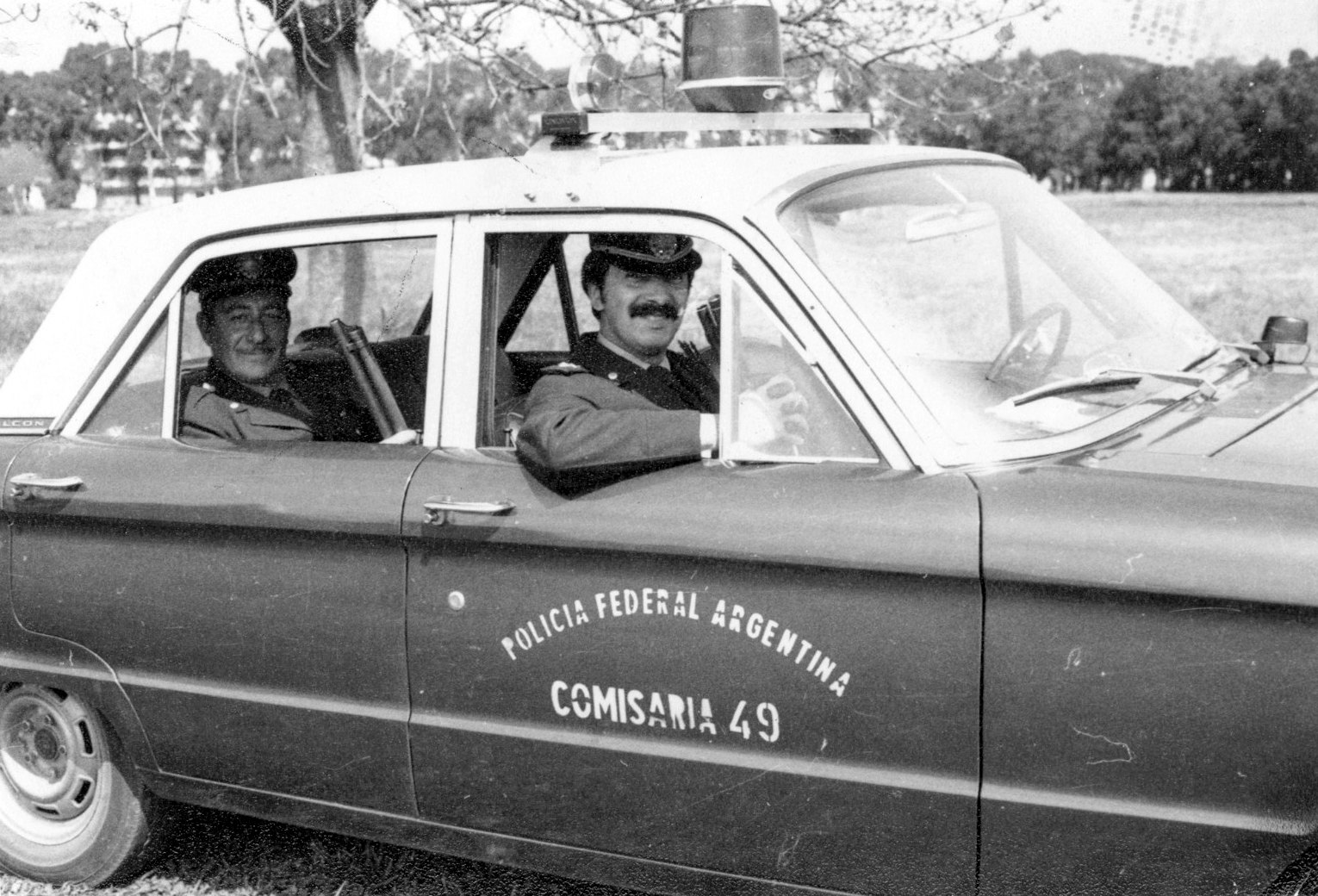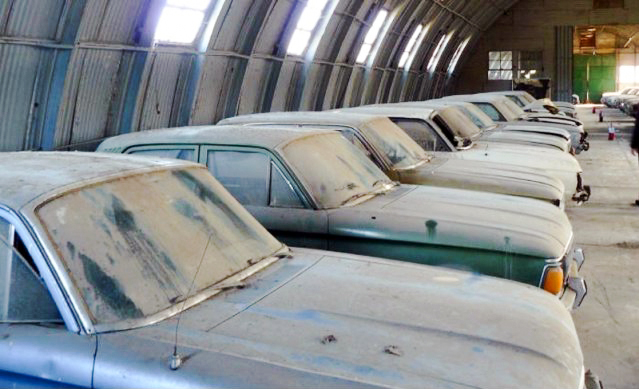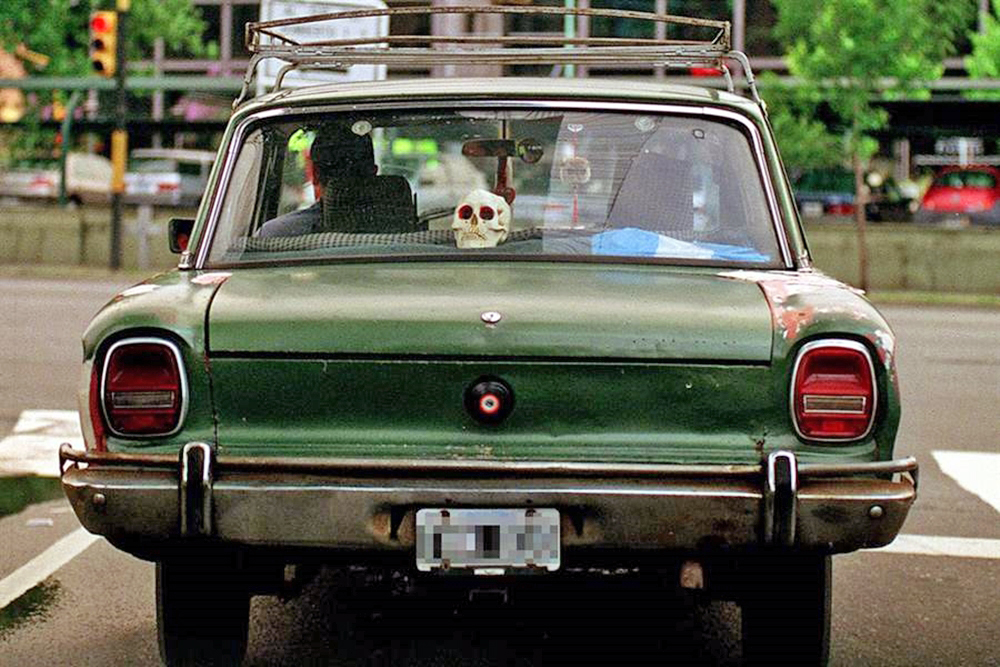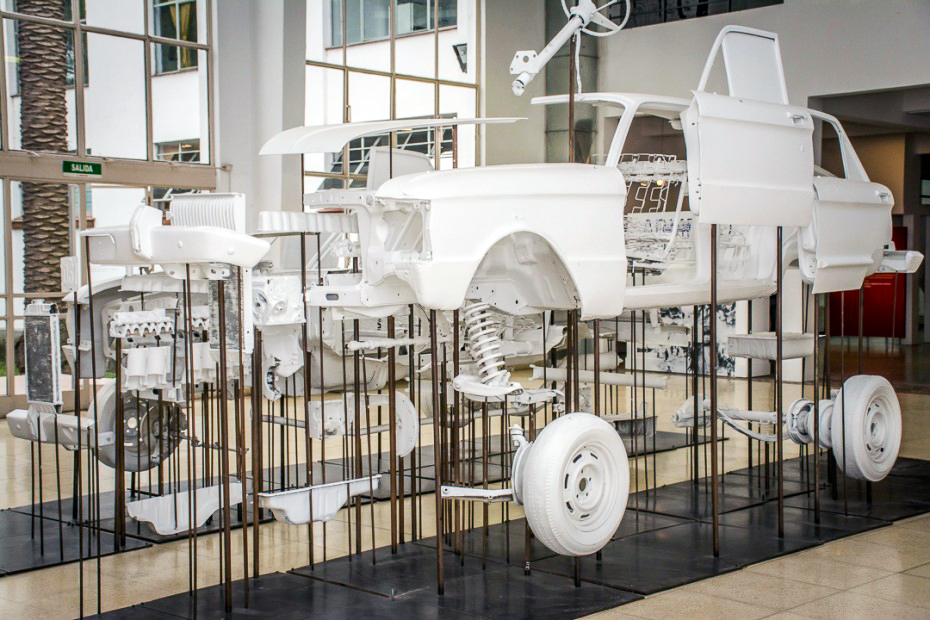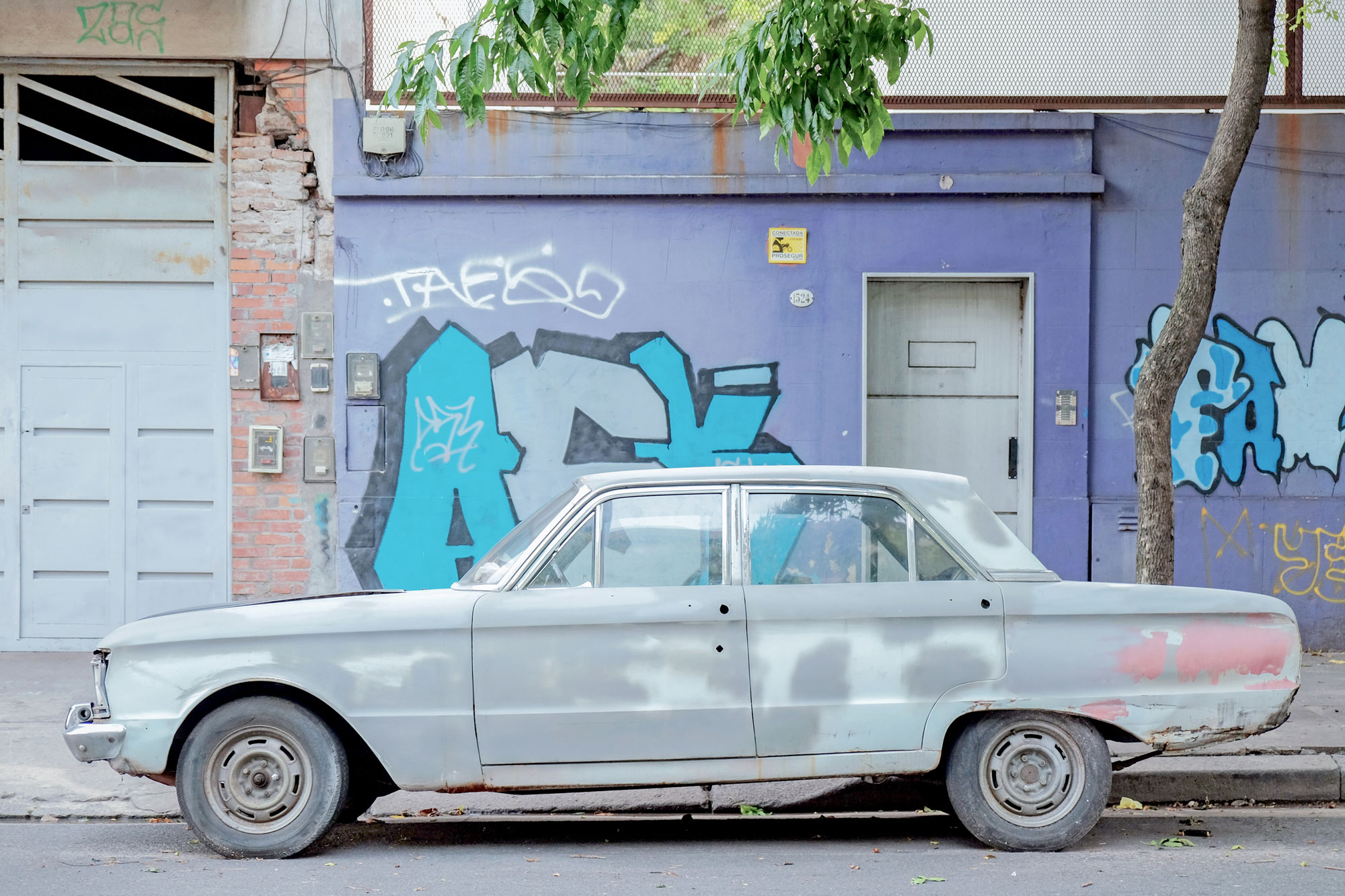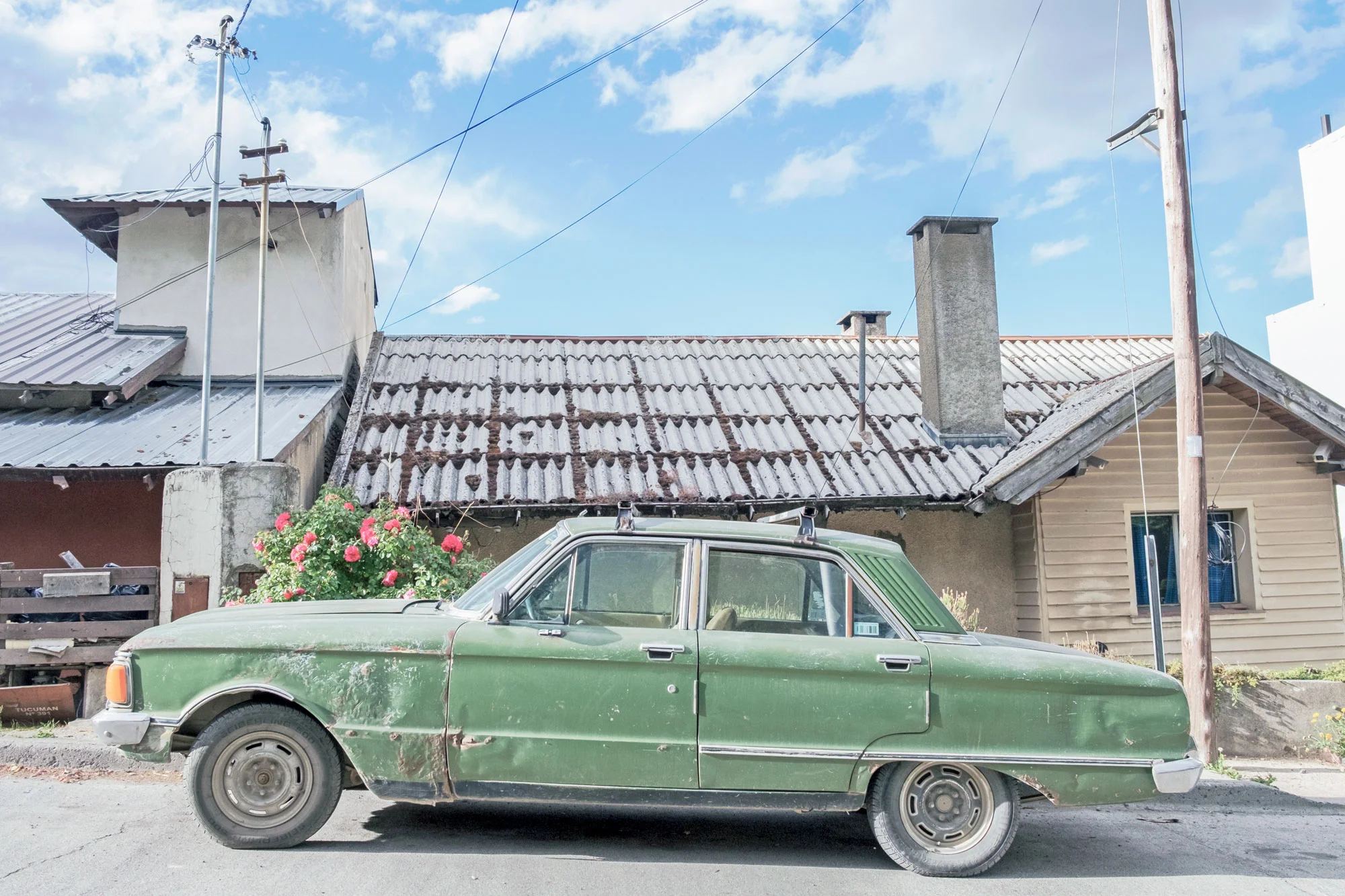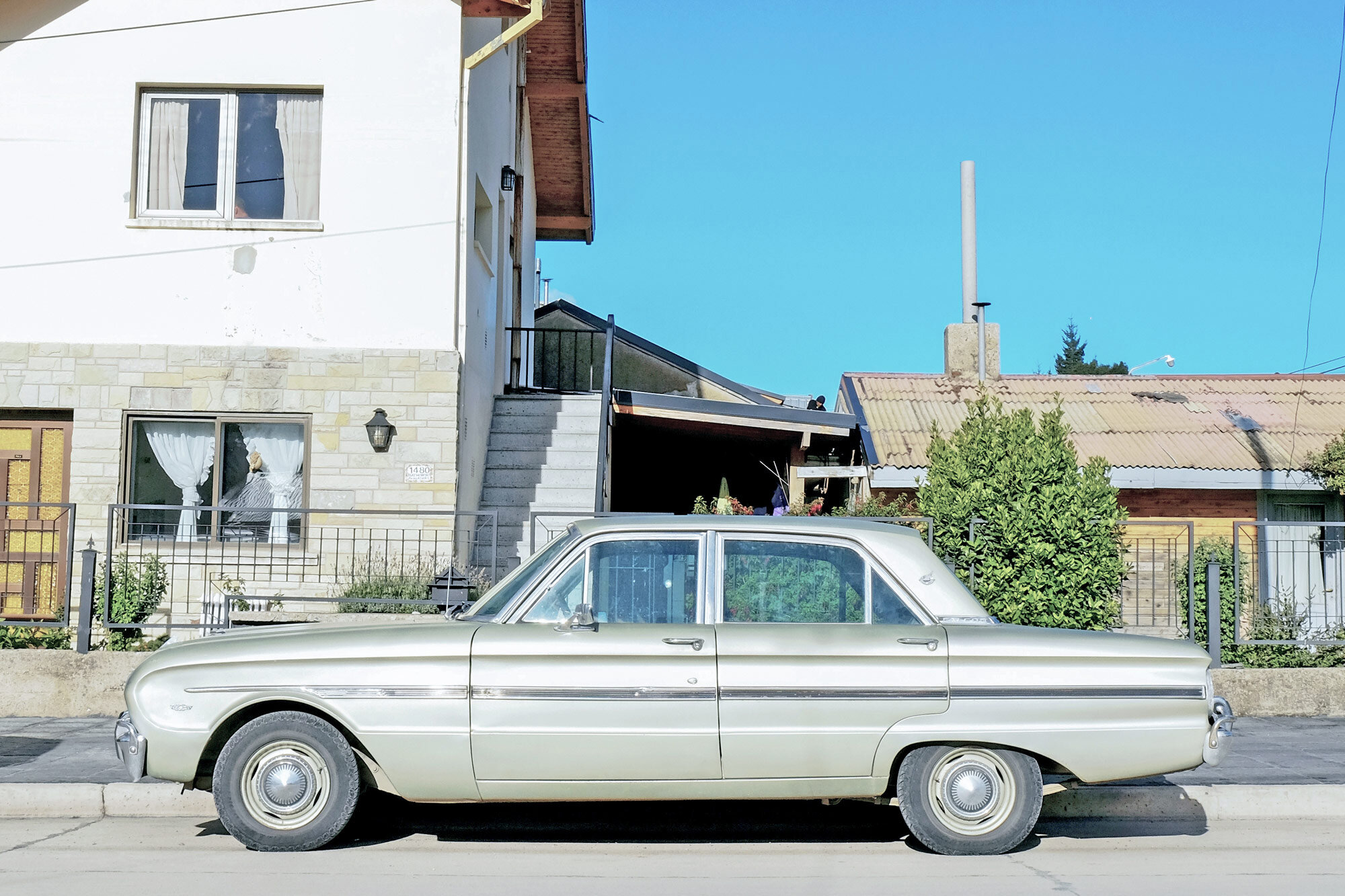Shooting the Classics
This dive into Argentina's history began when I magnified my photograph of an unfamiliar classic car, and discovered what was surely a missing Ford emblem.
Playa Centenario, Bariloche, 2018.
I took a lot of photographs of classic cars while in Argentina in 2017, and I'm back at it again. The above photograph is a recent example, and the catalyst of this story. Argentina's Ford Falcon had been right under my nose.
I shoot classic cars in the States, too, but there are just so many more still on the road in Argentina. I prefer photographing cars that aren't showpieces, or that are at least in an "everyday" setting - like this spiffy Comet in West Asheville (a spin-off, it turns out).
1964 Mercury Comet, Asheville, North Carolina, 2014. Shot on iPhone 4.
Unlike our classic car culture, which in many cases revolves around polishing them up for a Sunday drive, Argentina is still getting a lot of use out of their relics.
At first many of the foreign models here were new to my eyes. I would know whether something was an Audi, Chevy, Fiat, or Peugeot, but I didn't go the extra step to look up the models and their potential year of manufacture. This year I decided to pay closer attention.
An Inanimate Living Fossil
So there I was in my photo-editing cave, zooming in on the grille of this yellow classic, thinking surely it was a European staple. Instead, the oval I saw, though blank, could only be the Ford Motor Company emblem, I realized.
Exhibit A. "Computer: Enhance!"
I was a little confused, because in its body I saw the elegance of 1960s design, but its headlights belied the economy of the 1980s. Suffice it to say, I am not a fan of many cars from the 80s, especially from the Ford lineup - but I really liked this car.
After several minutes of research it became clear. This was a Ford Falcon, circa 1980. Furthermore, the American Falcon didn't continue until 1980. It barely made it to 1970. This was proving to be a wholly Argentine incarnation, born from American design.
Born in the U.S.A.
But whence in America didst the Falcon cometh? Sorry - How the heck did the Falcon come to be? Before he was the controversial Secretary of Defense from the Kennedy and Johnson administrations, Robert McNamara was with the Ford Motor Company. The Falcon hatched from his mind in Detroit during the late 1950s.
A 1960 Ford Falcon Futura.
A notorious number-cruncher, he pondered saving costs by designing a smaller car. He thought that people might prefer a more nimble wheelbase, as well.
The Ford Falcon made its debut in 1959 and was offered as an inexpensive alternative, both to purchase and operate, to the full-sized cars in the Ford lineup.
The inexpensive family car had its critics, but it was very successful against early "compact car" competitors. The Falcon wouldn't just put Ford ahead of their competition - its simple platform went on to inspire the Mustang, probably the most important car ever made by Ford.
Robert S. McNamara was made president of Ford Motor Company on November 9, 1960, the day John F. Kennedy beat Richard Nixon to the White House. Barely eight weeks later, on January 3, 1961, he resigned to become Kennedy’s Secretary of Defense. In that role he infamously oversaw the escalation of America’s involvement in the Vietnam War.
Meanwhile in South America...
The grille of a 1930s Ford V8 that was possibly a schoolbus. I took this photo in Tigre, in 2017, not far from the La Boca factory where it was produced almost 100 years ago. I would love to know the story behind this fly that adorns the grille.
In the late 1800s, Argentina's economy grew at an unprecedented rate rendering it one of the wealthiest nations in the world. By 1914, around half of the population was foreign-born, having arrived to farm and ranch on Argentina's vast and fertile territory.
The young Ford Motor Company of Dearborn, Michigan took notice of the burgeoning market, and in 1913, Ford Motor Argentina was created as a subsidiary. Its La Boca factory rolled out a Model T by 1917, and by 1960 a bigger factory was needed to meet the national demand. The Pacheco factory opened in 1961 in Greater Buenos Aires, and still assembles Fords today.
The Argentine Falcon
McNamara's Falcon went into production in Argentina the same year it began in the US. As mentioned earlier, the US Falcon had initial success, but it dwindled. Design changes were made to revive it, to no avail, and by its last year in 1970 it was barely the same car.
It carried on strongly in Argentina, though. By 1979 Argentina's Ford Falcon was the highest-selling vehicle in the country, and remained so for 6 more years. The design continued to evolve, too, and became distinctly Argentine.
The Argentine Falcon was the ubiquitous taxi cab of the era.
The tough and reliable Falcon also became a symbol of middle-class mobility, and versatility - it was popular and loved as their own. After all, only 26 of its 3,500+ parts were imported.
Birds of Prey
There's a very ugly side to this story. On March 24, 1976, in a bloodless military coup, the Argentine army took control of the government and ushered in a period of terror and brutality.
Military coups have happened frequently in Argentina, contributing to much of the economic instability since the early 1900s. The first came in 1930; others followed in 1943, 1955, 1962, 1966 and 1976.
The election of 1989 marked the first time in more than 60 years that a civilian president handed power to an elected successor.
The coup of 1976 began the "Guerra Sucia," or Dirty War. A junta ousted Isabel Perón (3rd wife of Juan Perón) and began targeting students, union organizers, artists, journalists, and anyone else suspected to be a left-wing activist. Paranoid of communism's spread, the CIA had a hand in supporting this state terrorism.
Unfortunately for political dissidents during the Dirty War, Argentina's Ford Falcon was a symbol of terror. Secret police and death squads kidnapped thousands into dark green Falcons — some 30,000 people disappeared between 1976 and 1983.
Atrocities committed by the successive military juntas created a state of dissociated insanity in Argentine society. Kidnappings in broad daylight, mass executions, and child murders were "normalized." People were disappearing into Falcons all the time and many were too terrified to do anything except pretend it hadn't happened.
In recent years, Ford Argentina has been implicated in supporting these dark regimes, which they of course deny. It is hard to deny the 2018 conviction of two former Ford Argentina executives, Pedro Müller, 86, and Héctor Sibila, 90, for the kidnapping and torture of 24 employees, though.
Colegiales, Buenos Aires, 2017. "NUNCA MAS" is the Argentine cry of "Never again."
Since 1977, the Mothers of Plaza de Mayo have marched in protest of these evil secrets that were hidden in plain sight. They are still demanding answers for crimes committed, and now must also confront "alternative facts" of the modern world, spoken by those in power who wish to diminish the numbers of those lost.
Amigos del Falcon
Considering the horrors of that time, it is understandable how the sight of a green Falcon could bring back fear for the many still around who lived through it. Yet, the Falcon was also beloved as a taxi, a farm truck, and a family station wagon - a good car is a good car.
In 1997, the Friends of the Falcon Club formed in Buenos Aires. It started small, meeting monthly on Saturdays in the forest outlying the city, but has since outgrown its meeting place twice. Around 13,000 people follow the club on Facebook.
The only requirement to join is to own a Falcon that is in generally good condition. Their hope is to round up as many Falcons that are in good condition as possible, and encourage the preservation of them.
I have also learned of the prestigious FanaFalcon Club, through a reader of this post — they are numerous as well, with over 21,000 Facebook members and a very active forum that pertains to all matters of their community.
It makes me happy to witness their camaradería.
A Truly Durable Car
A Ford Falcon fording...
Once I learned what the Ford Falcon was, I started seeing them everywhere. I looked back through my photos from last year's visit, and realized I had photographed several already. So I'm on a mission now, and I don't know exactly why, but I can't stop photographing these cars.
For every Argentine Falcon I see in good condition, I see at least one more that is uniquely, and spectacularly dilapidated - but so many of them still run.
After about 30 years of production, the last Falcon rolled off of Ford Argentina's line in 1991. About 500,000 were made, and I suspect nearly all of them are still out there somewhere, either getting beat to hell or maintained with love. There isn't much in between. For better or worse, this is the car that became as Argentine as tango.
I made an Argentine friend over Instagram who sends me snapshots of Falcons he spots around his town. His family loves Chevy, and auto racing, and he added:
”Mi papa era “zurdo” y que seamos fanaticos de Chevrolet tiene que ver con eso.”
which means:
”My dad was a "lefty" and that we are fans of Chevrolet has to do with that.”
Scroll down to see a few Argentine Falcons spotted in the wild.
Want to read more about Argentina? Check out my experience roaming Buenos Aires with a camera for 3 months.
For more automobile history, check out The Return of the Electric Vehicle.


